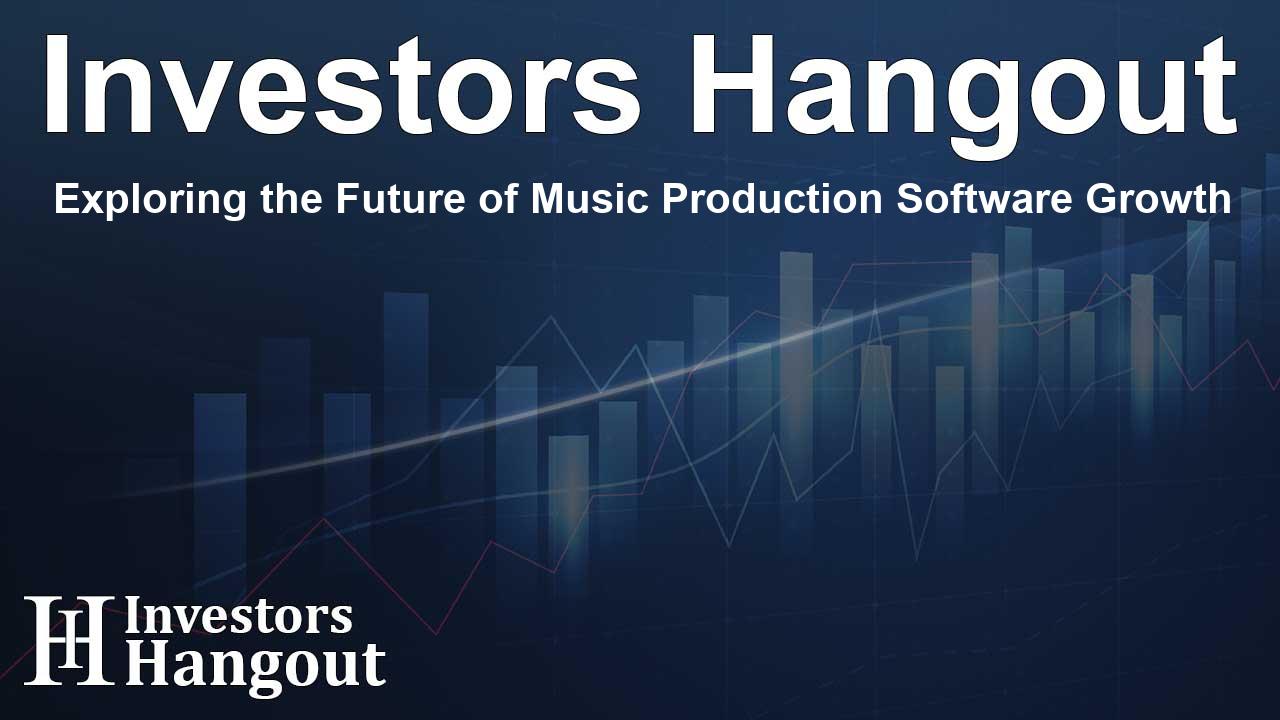Exploring the Future of Music Production Software Growth

The Rapid Growth of Music Production Software
The music production software market is on the brink of a significant increase, estimated to grow by USD 432.8 million from 2025 to 2029. This growth is driven by a rising number of musicians and artists and the increasing integration of artificial intelligence in music creation. According to recent reports, this sector is projected to expand at a compound annual growth rate (CAGR) of approximately 7.7% during this period.
Driving Forces Behind Market Expansion
One of the primary factors fueling the growth of this market is the innovative use of AI technology in music production. Aspiring musicians now have access to advanced tools that not only simplify the music creation process but also enhance creativity. AI enables features such as automated mixing and mastering, which have become essential for both industry professionals and hobbyists. AI-powered technologies are revolutionizing digital audio workstations (DAWs), allowing for sophisticated sound manipulation and production capabilities.
Challenges and Market Dynamics
Despite the promising outlook, the music production software landscape faces challenges, notably the prevalence of open-source software. Although proprietary solutions offer unique features, the availability of free alternatives has intensified competition. Open-source tools like Audacity and LMMS provide substantial functionality without the associated costs, appealing particularly to novice producers. This shift underscores the need for software companies to continuously innovate and adapt their offerings.
The Role of AI in Music Production
AI is not merely an add-on; it is transforming music production into a more agile and creative endeavor. With the advancements in AI, tools such as Orb Composer 1.5 have gained traction, allowing artists to generate music tailored to specific emotional parameters or styles. This innovation is making music production more accessible to those who might lack formal training, empowering a new generation of creators who can experiment with music in unprecedented ways.
Emerging Trends in Music Software
Several trends are shaping the future of music production software. The integration of social media platforms with music applications is one such trend that is proving beneficial for marketing and exposure. Furthermore, the rise of cloud-based solutions is facilitating collaboration among artists across distances, enabling them to work together seamlessly in real-time. Subscription models and freemium services are providing flexible access to sophisticated tools, appealing to both professional producers and hobbyists.
Innovation and Market Opportunities
The demand for innovative production tools is increasing rapidly. Producers are leaning towards music creation software that integrates advanced features such as virtual instruments and automated processes. The industry is also witnessing a rise in educational platforms that teach music production, catering to a burgeoning audience eager to learn. Such educational resources are critical for nurturing talent and providing a gateway into the music industry.
Forecasts and Future Direction
As the music production market evolves, the relationship between technology and artistry will likely deepen. Reports suggest an ongoing expansion in the use of machine learning algorithms, which will enable even more personalized and dynamic music experiences. Companies must stay ahead of the curve by watching emerging trends and adjusting their strategies accordingly.
Frequently Asked Questions
What is driving the growth of the music production software market?
The growth is largely driven by an increasing number of musicians and artists, along with advances in AI technology, which is redefining music creation.
How significant is the role of AI in music production?
AI plays a crucial role by enabling automated processes like mixing and mastering, which enhances creative possibilities for users.
Are there challenges in the music production software market?
Yes, the market faces challenges from open-source software, which provides free alternatives and increases competition.
What trends are shaping music production software?
Key trends include the integration of social media for promotion, the rise of cloud-based collaboration tools, and flexible subscription pricing models.
What is the future outlook for music production software?
The future looks promising, with continuous innovation expected and an increasing focus on AI and machine learning to enhance user experiences.
About The Author
Contact Logan Wright privately here. Or send an email with ATTN: Logan Wright as the subject to contact@investorshangout.com.
About Investors Hangout
Investors Hangout is a leading online stock forum for financial discussion and learning, offering a wide range of free tools and resources. It draws in traders of all levels, who exchange market knowledge, investigate trading tactics, and keep an eye on industry developments in real time. Featuring financial articles, stock message boards, quotes, charts, company profiles, and live news updates. Through cooperative learning and a wealth of informational resources, it helps users from novices creating their first portfolios to experts honing their techniques. Join Investors Hangout today: https://investorshangout.com/
The content of this article is based on factual, publicly available information and does not represent legal, financial, or investment advice. Investors Hangout does not offer financial advice, and the author is not a licensed financial advisor. Consult a qualified advisor before making any financial or investment decisions based on this article. This article should not be considered advice to purchase, sell, or hold any securities or other investments. If any of the material provided here is inaccurate, please contact us for corrections.
